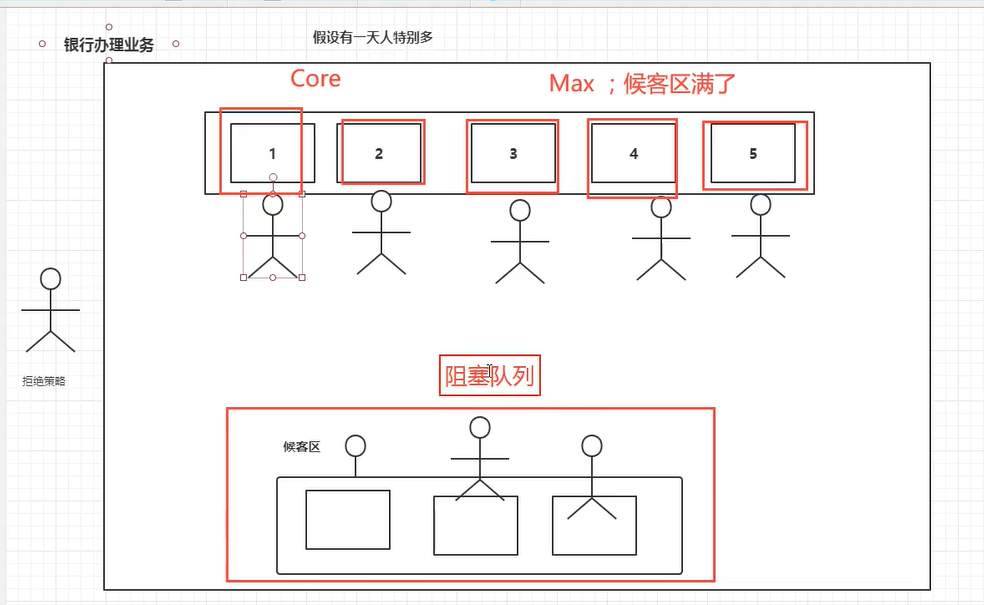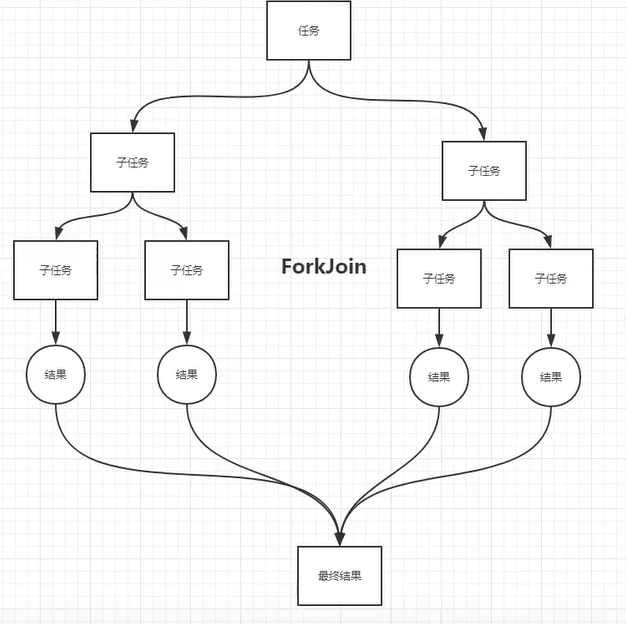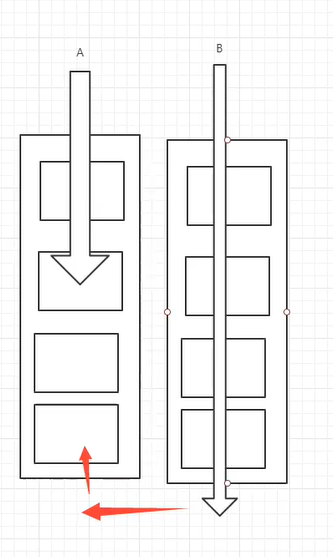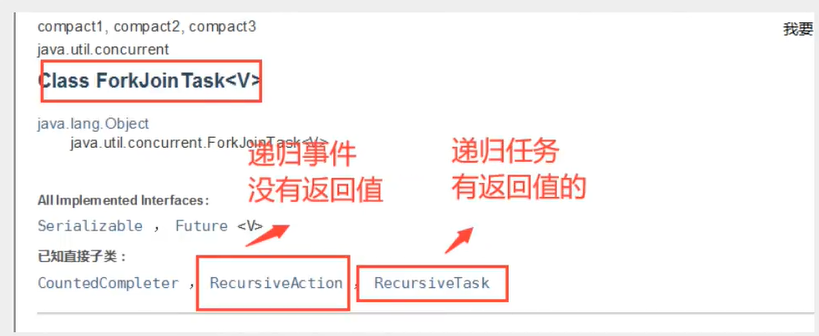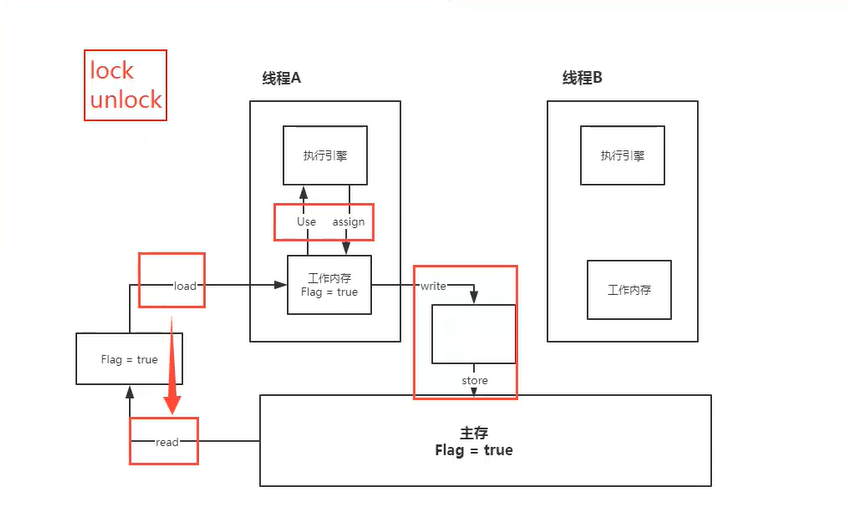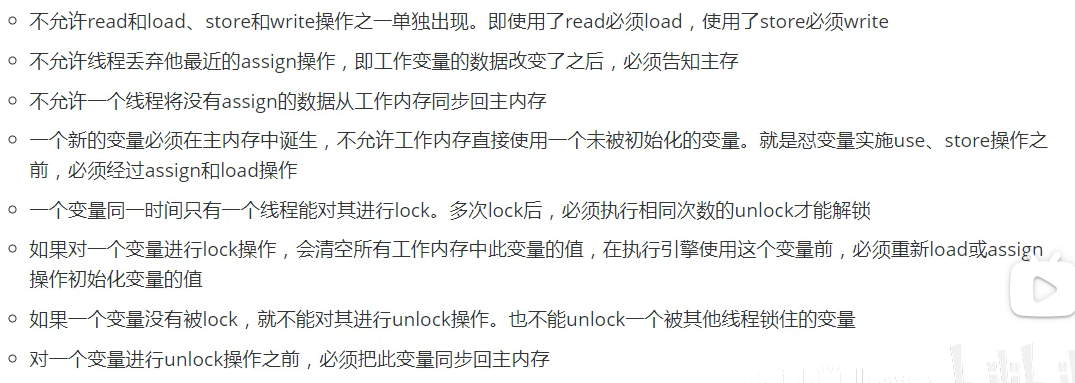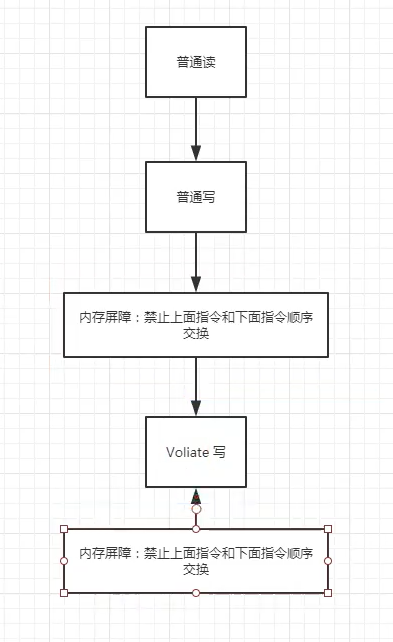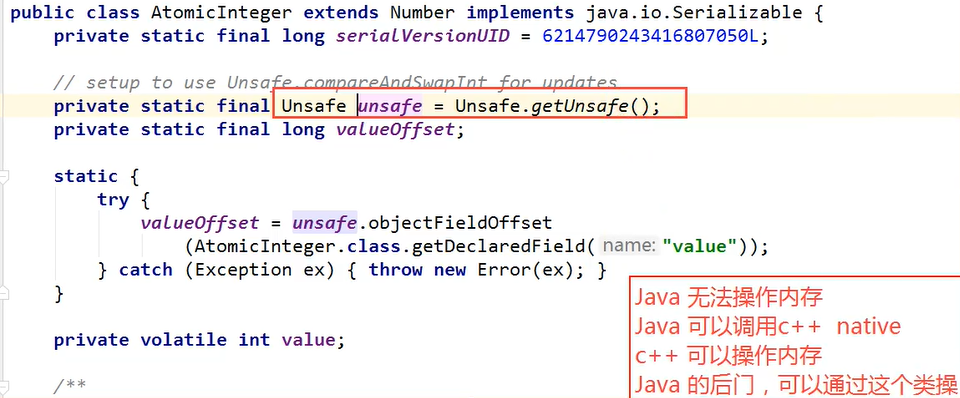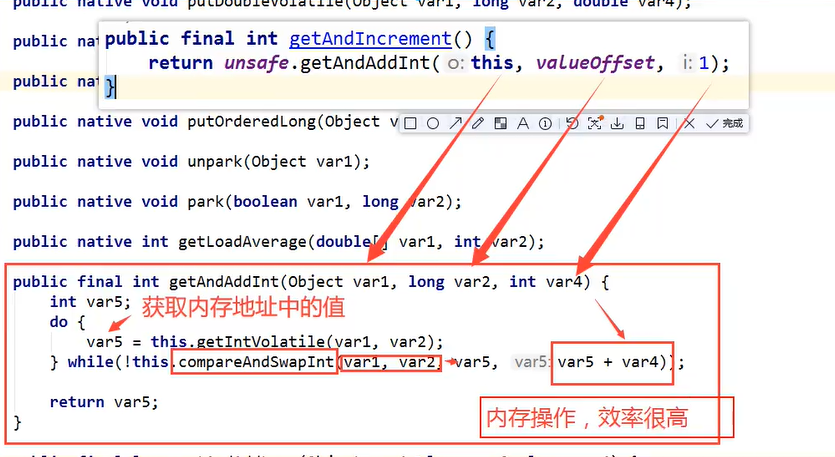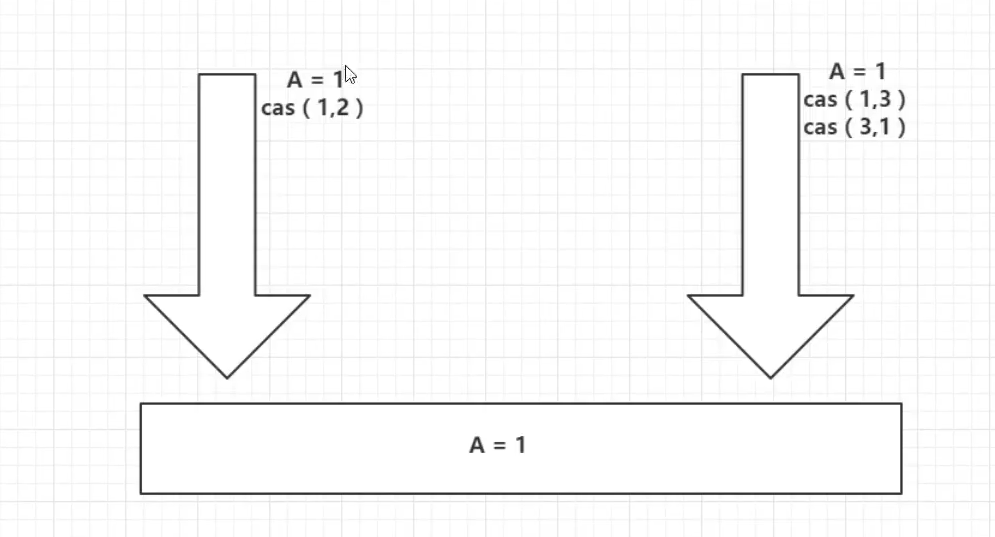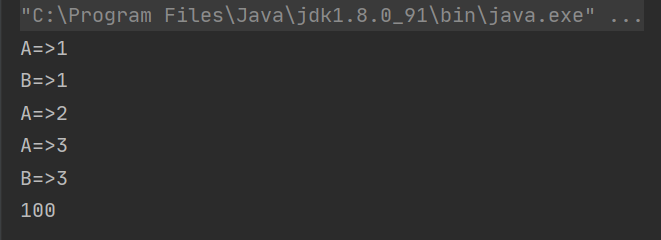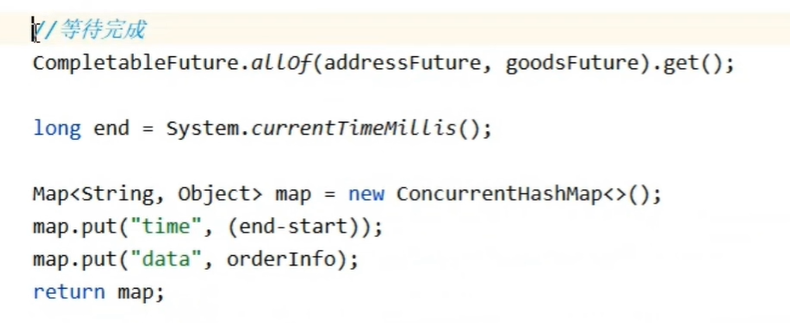JUC并发编程 线程和进程 进程:一个程序 一个进程可以包含多个线程 至少包含一个
java默认是有两个线程的:一个是main线程 一个是GC线程(做垃圾回收)
线程:开了一个IDEA进程,写完代码自动保存(线程负责的)
对于java而言:Thread、Runable、Callable
java真的可以开启线程吗?
java是没有权限去开启一个线程的,只能通过本地方法去调用底层的C++方法,java无法直接操作硬件,因为它是运行在虚拟机上的
并发和并行
并发(多个线程操作同一个资源)
CPU一核,模拟出来多条线程、天下武功 唯快不破,快速交替
并行 (多个人一起行走)
1 2 3 4 System.out.println(Runtime.getRuntime().availableProcessors());
并发编程的本质:充分利用CPU的资源
线程有几个状态
1 2 3 4 5 6 7 8 public enum State NEW, RUNNABLE, BLOCKED, WAITING, TIMED_WAITING, TERMINATED; }
wait和sleep的区别
来自不同的类
wait=>Object
sleep=>Thread
关于锁的释放
wait会释放锁
sleep不会释放锁
使用的范围是不同的
wait必须在同步代码块中睡
sleep可以在任何地方睡
是否需要捕获异常
wait需要捕获异常(中断异常)
sleep必须捕获异常
Lock锁(重点)
传统Synchronized
1 2 3 4 5 6 7 8 9 10 11 12 13 14 15 16 17 18 19 20 21 22 23 24 25 26 27 28 29 30 31 32 33 34 35 36 37 38 39 40 41 42 43 44 package com.fanchen.demo1;public class SaleTicketDemo01 public static void main (String[] args) Ticket ticket = new Ticket(); new Thread(()->{ for (int i = 0 ; i < 60 ; i++) { ticket.saleTicket(); } }, "A" ).start(); new Thread(()->{ for (int i = 0 ; i < 60 ; i++) { ticket.saleTicket(); } }, "B" ).start(); new Thread(()->{ for (int i = 0 ; i < 60 ; i++) { ticket.saleTicket(); } }, "C" ).start(); } } class Ticket private int number = 50 ; public synchronized void saleTicket () if (number > 0 ){ System.out.println(Thread.currentThread().getName() + "卖出了" + (number--) + "票,剩余:" + number); } } }
Lock接口
1 2 3 4 public ReentrantLock (boolean fair) sync = fair ? new FairSync() : new NonfairSync(); }
公平锁:十分公平 先来后到
非公平锁:十分不公平 可以插队(默认是非公平锁)
1 2 3 4 5 6 7 8 9 10 11 12 13 14 15 16 17 18 19 20 21 22 23 24 25 26 27 28 29 30 31 32 33 34 35 36 37 38 39 40 41 42 43 package com.fanchen.demo1;import java.util.concurrent.locks.Lock;import java.util.concurrent.locks.ReentrantLock;public class SaleTicketDemo02 public static void main (String[] args) Ticket02 ticket = new Ticket02(); new Thread(()->{ for (int i = 0 ; i < 40 ; i++) ticket.saleTicket(); }, "A" ).start(); new Thread(()->{ for (int i = 0 ; i < 40 ; i++) ticket.saleTicket(); }, "B" ).start(); new Thread(()->{ for (int i = 0 ; i < 40 ; i++) ticket.saleTicket(); }, "C" ).start(); } } class Ticket02 private int number = 30 ; Lock lock = new ReentrantLock(); public synchronized void saleTicket () lock.lock(); try { if (number > 0 ) { System.out.println(Thread.currentThread().getName() + "卖出了" + (number--) + "票,剩余:" + number); } } catch (Exception e) { e.printStackTrace(); } finally { lock.unlock(); } } }
Synchronized和Lock锁区别
Synchronized 是内置的java关键字 而 Lock是一个java类
Synchronized 无法判断获取锁的状态,Lock锁是可以判断是否获取到锁
Synchronized 会自动释放锁,Lock锁必须要手动释放,如果不释放锁会造成死锁
Synchronized 线程1(获得锁,阻塞)、线程2(等待,傻傻的等);Lock锁就不一定会等待下去
Synchronized 可重入锁,不可以中断的,非公平;Lock,可重入锁,可以判断锁,非公平(可以自己设置)
Synchronized 适合锁少量的代码同步问题;Lock锁适合大量的同步代码
锁是什么,如何判断锁的是谁
生产者消费者问题 1 2 3 4 5 6 7 8 9 10 11 12 13 14 15 16 17 18 19 20 21 22 23 24 25 26 27 28 29 30 31 32 33 34 35 36 37 38 39 40 41 42 43 44 45 46 47 48 49 50 51 52 53 54 55 56 57 package com.fanchen.demo1.product;public class A public static void main (String[] args) Data data = new Data(); new Thread(()->{ for (int i = 0 ; i < 10 ; i++) { try { data.increment(); } catch (InterruptedException e) { e.printStackTrace(); } } }, "A" ).start(); new Thread(()->{ for (int i = 0 ; i < 10 ; i++) { try { data.decrement(); } catch (InterruptedException e) { e.printStackTrace(); } } }, "B" ).start(); } } class Data private int number = 0 ; public synchronized void increment () throws InterruptedException if (number!=0 ){ this .wait(); } number++; this .notifyAll(); System.out.println(Thread.currentThread().getName() + "=>" + number); } public synchronized void decrement () throws InterruptedException if (number == 0 ){ this .wait(); } number--; this .notifyAll(); System.out.println(Thread.currentThread().getName() + "=>" + number); } }
问题存在,ABCD四个线程安全吗
多个线程用while可以避免虚假唤醒
JUC版本的生产者消费者
1 2 3 4 5 6 7 8 9 10 11 12 13 14 15 16 17 18 19 20 21 22 23 24 25 26 27 28 29 30 31 32 33 34 35 36 37 38 39 40 41 42 43 44 45 46 47 48 49 50 51 52 53 54 55 56 57 58 59 60 61 62 63 64 65 66 67 68 69 70 71 72 73 74 75 76 77 78 79 80 81 82 83 84 85 86 87 88 89 90 91 92 93 94 95 96 97 package com.fanchen.demo1.product;import java.util.concurrent.locks.Condition;import java.util.concurrent.locks.Lock;import java.util.concurrent.locks.ReentrantLock;public class B public static void main (String[] args) Data02 data = new Data02(); new Thread(()->{ for (int i = 0 ; i < 10 ; i++) { try { data.increment(); } catch (InterruptedException e) { e.printStackTrace(); } } }, "A" ).start(); new Thread(()->{ for (int i = 0 ; i < 10 ; i++) { try { data.decrement(); } catch (InterruptedException e) { e.printStackTrace(); } } }, "B" ).start(); new Thread(()->{ for (int i = 0 ; i < 10 ; i++) { try { data.increment(); } catch (InterruptedException e) { e.printStackTrace(); } } }, "C" ).start(); new Thread(()->{ for (int i = 0 ; i < 10 ; i++) { try { data.decrement(); } catch (InterruptedException e) { e.printStackTrace(); } } }, "D" ).start(); } } class Data02 private int number = 0 ; Lock lock = new ReentrantLock(); Condition condition = lock.newCondition(); public void increment () throws InterruptedException lock.lock(); try { while (number!=0 ){ condition.await(); } number++; condition.signalAll(); System.out.println(Thread.currentThread().getName() + "=>" + number); }catch (Exception e){ e.printStackTrace(); }finally { lock.unlock(); } } public void decrement () throws InterruptedException lock.lock(); try { while (number == 0 ){ condition.await(); } number--; condition.signalAll(); System.out.println(Thread.currentThread().getName() + "=>" + number); }catch (Exception e){ e.printStackTrace(); }finally { lock.unlock(); } } }
任何一个新的技术肯定不是旧的代替,而是有新的技术和优势
1 2 3 4 5 6 7 8 9 10 11 12 13 14 15 16 17 18 19 20 21 22 23 24 25 26 27 28 29 30 31 32 33 34 35 36 37 38 39 40 41 42 43 44 45 46 47 48 49 50 51 52 53 54 55 56 57 58 59 60 61 62 63 64 65 66 67 68 69 70 71 72 73 74 75 76 77 78 79 80 81 82 83 84 85 86 package com.fanchen.demo1.product;import java.util.concurrent.locks.Condition;import java.util.concurrent.locks.Lock;import java.util.concurrent.locks.ReentrantLock;public class C public static void main (String[] args) Data03 data = new Data03(); new Thread(() -> { for (int i = 0 ; i < 10 ; i++) { data.printA(); } }, "A" ).start(); new Thread(() -> { for (int i = 0 ; i < 10 ; i++) { data.printB(); } }, "B" ).start(); new Thread(() -> { for (int i = 0 ; i < 10 ; i++) { data.printC(); } }, "C" ).start(); } } class Data03 private final Lock lock = new ReentrantLock(); private final Condition condition1 = lock.newCondition(); private final Condition condition2 = lock.newCondition(); private final Condition condition3 = lock.newCondition(); private int flag = 1 ; public void printA () lock.lock(); try { while (flag != 1 ) { condition1.await(); } System.out.println(Thread.currentThread().getName() + "=>A" ); flag = 2 ; condition2.signal(); } catch (Exception e) { e.printStackTrace(); } finally { lock.unlock(); } } public void printB () lock.lock(); try { while (flag != 2 ) { condition2.await(); } System.out.println(Thread.currentThread().getName() + "=>B" ); flag = 3 ; condition3.signal(); } catch (Exception e) { e.printStackTrace(); } finally { lock.unlock(); } } public void printC () lock.lock(); try { while (flag != 3 ) { condition3.await(); } System.out.println(Thread.currentThread().getName() + "=>C" ); flag = 1 ; condition1.signal(); } catch (Exception e) { e.printStackTrace(); } finally { lock.unlock(); } } }
如何判断锁的是谁(8锁现象) 1 2 3 4 5 6 7 8 9 10 11 12 13 14 15 16 17 18 19 20 21 22 23 24 25 26 27 28 29 30 31 32 33 34 35 36 37 38 39 package com.fanchen.demo1.lock8;import java.util.concurrent.TimeUnit;public class Test08 public static void main (String[] args) Phone phone = new Phone(); new Thread(phone::sendMessage, "A" ).start(); try { TimeUnit.SECONDS.sleep(1 ); } catch (InterruptedException e) { e.printStackTrace(); } new Thread(phone::call, "B" ).start(); } } class Phone public synchronized void sendMessage () try { TimeUnit.SECONDS.sleep(4 ); } catch (InterruptedException e) { e.printStackTrace(); } System.out.println("发短信" ); } public synchronized void call () System.out.println("打电话" ); } }
1 2 3 4 5 6 7 8 9 10 11 12 13 14 15 16 17 18 19 20 21 22 23 24 25 26 27 28 29 30 31 32 33 34 35 36 37 38 39 40 41 42 43 44 45 package com.fanchen.demo1.lock8;import java.util.concurrent.TimeUnit;public class Test082 public static void main (String[] args) Phone02 phone1 = new Phone02(); Phone02 phone2 = new Phone02(); new Thread(phone1::sendMessage, "A" ).start(); try { TimeUnit.SECONDS.sleep(1 ); } catch (InterruptedException e) { e.printStackTrace(); } new Thread(phone2::call, "B" ).start(); } } class Phone02 public synchronized void sendMessage () try { TimeUnit.SECONDS.sleep(4 ); } catch (InterruptedException e) { e.printStackTrace(); } System.out.println("发短信" ); } public synchronized void call () System.out.println("打电话" ); } public void hello () System.out.println("hello" ); } }
1 2 3 4 5 6 7 8 9 10 11 12 13 14 15 16 17 18 19 20 21 22 23 24 25 26 27 28 29 30 31 32 33 34 35 36 37 38 39 package com.fanchen.demo1.lock8;import java.util.concurrent.TimeUnit;public class Test083 public static void main (String[] args) new Thread(Phone03::sendMessage, "A" ).start(); try { TimeUnit.SECONDS.sleep(1 ); } catch (InterruptedException e) { e.printStackTrace(); } new Thread(Phone03::call, "B" ).start(); } } class Phone03 public static synchronized void sendMessage () try { TimeUnit.SECONDS.sleep(4 ); } catch (InterruptedException e) { e.printStackTrace(); } System.out.println("发短信" ); } public static synchronized void call () System.out.println("打电话" ); } }
1 2 3 4 5 6 7 8 9 10 11 12 13 14 15 16 17 18 19 20 21 22 23 24 25 26 27 28 29 30 31 32 33 34 35 36 37 38 39 40 package com.fanchen.demo1.lock8;import java.util.concurrent.TimeUnit;public class Test084 public static void main (String[] args) Phone04 phone04 = new Phone04(); new Thread(Phone04::sendMessage, "A" ).start(); try { TimeUnit.SECONDS.sleep(1 ); } catch (InterruptedException e) { e.printStackTrace(); } new Thread(phone04::call, "B" ).start(); } } class Phone04 public static synchronized void sendMessage () try { TimeUnit.SECONDS.sleep(4 ); } catch (InterruptedException e) { e.printStackTrace(); } System.out.println("发短信" ); } public synchronized void call () System.out.println("打电话" ); } }
小结
new this 具体的一个手机
static Class 唯一的一个模板
集合类不安全
List不安全
1 2 3 4 5 6 7 8 9 10 11 12 13 14 15 16 17 18 19 20 21 22 23 24 25 26 27 28 29 package com.fanchen.demo1.unsafe;import java.util.*;import java.util.concurrent.CopyOnWriteArrayList;public class ListTest public static void main (String[] args) List<String> list = new CopyOnWriteArrayList<>(); for (int i = 1 ; i <= 10 ; i++) { new Thread(()->{ list.add(UUID.randomUUID().toString()); System.out.println(list); }, String.valueOf(i)).start(); } } }
Set不安全
1 2 3 4 5 6 7 8 9 10 11 12 13 14 15 16 17 18 19 20 21 22 23 24 package com.fanchen.demo1.unsafe;import java.util.Set;import java.util.UUID;import java.util.concurrent.CopyOnWriteArraySet;public class SetTest public static void main (String[] args) Set<String> set = new CopyOnWriteArraySet<>(); for (int i = 1 ; i <= 30 ; i++) { new Thread(()->{ set.add(UUID.randomUUID().toString()); System.out.println(set); }, String.valueOf(i)).start(); } } }
hashset底层是什么?
1 2 3 4 5 6 7 8 9 private static final Object PRESENT = new Object();public HashSet () map = new HashMap<>(); } public boolean add (E e) return map.put(e, PRESENT)==null ; }
Map不安全
1 2 3 4 5 6 7 8 9 10 11 12 13 14 15 16 17 18 19 20 21 22 23 24 25 26 27 package com.fanchen.demo1.unsafe;import java.util.Collections;import java.util.HashMap;import java.util.Map;import java.util.UUID;import java.util.concurrent.ConcurrentHashMap;public class MapTest public static void main (String[] args) Map<String, Object> map = new ConcurrentHashMap<>(); for (int i = 1 ; i <= 30 ; i++) { new Thread(()->{ map.put(Thread.currentThread().getName(), UUID.randomUUID().toString()); System.out.println(map); }, String.valueOf(i)).start(); } } }
Callable Callable接口类似于Runnable,因为他们都是为了其实例可能由另一个线程执行的类设计的,然而Runnable不返回结果也不抛出被检测的异常。
可以有返回值
可以抛出异常
方法不同 run() call()
细节:有缓存;返回值可能会阻塞
1 2 3 4 5 6 7 8 9 10 11 12 13 14 15 16 17 18 19 20 21 22 23 24 25 26 27 28 package com.fanchen.demo1.callable;import java.util.concurrent.Callable;import java.util.concurrent.ExecutionException;import java.util.concurrent.FutureTask;public class CallableTest public static void main (String[] args) FutureTask<String> task = new FutureTask<>(new MyThread()); new Thread(task,"A" ).start(); new Thread(task,"B" ).start(); try { String result = task.get(); System.out.println(result); } catch (InterruptedException | ExecutionException e) { e.printStackTrace(); } } } class MyThread implements Callable <String > @Override public String call () throws Exception return "范晨是真的帅" ; } }
常用的辅助类(必会) 1 2 3 4 5 6 7 8 9 10 11 12 13 14 15 16 17 18 19 20 package com.fanchen.demo1.add;import java.util.concurrent.CountDownLatch;public class CountDownLatchDemo public static void main (String[] args) throws InterruptedException CountDownLatch count = new CountDownLatch(10 ); for (int i = 1 ; i <= 10 ; i++) { new Thread(()->{ System.out.println(Thread.currentThread().getName() + " GO out" ); count.countDown(); }, String.valueOf(i)).start(); } count.await(); System.out.println("Close Door" ); } }
count.countDown(); 数量减一
count.await(); 等待计数器归零
1 2 3 4 5 6 7 8 9 10 11 12 13 14 15 16 17 18 19 20 21 22 23 24 25 26 27 28 29 package com.fanchen.demo1.add;import java.util.concurrent.BrokenBarrierException;import java.util.concurrent.CyclicBarrier;public class CyclicBarrierDemo public static void main (String[] args) CyclicBarrier barrier = new CyclicBarrier(7 , () -> { System.out.println("召唤神龙成功!" ); }); for (int i = 1 ; i <= 7 ; i++) { final int temp = i; new Thread(()->{ System.out.println(Thread.currentThread().getName() + "收集了" + temp + "个龙珠" ); try { barrier.await(); } catch (InterruptedException | BrokenBarrierException e) { e.printStackTrace(); } }).start(); } } }
1 2 3 4 5 6 7 8 9 10 11 12 13 14 15 16 17 18 19 20 21 22 23 24 25 package com.fanchen.demo1.add;import java.util.concurrent.Semaphore;import java.util.concurrent.TimeUnit;public class SemaphoreDemo public static void main (String[] args) Semaphore semaphore = new Semaphore(3 ); for (int i = 1 ; i <= 6 ; i++) { new Thread(() -> { try { semaphore.acquire(); System.out.println(Thread.currentThread().getName() + "获取到了" ); TimeUnit.SECONDS.sleep(2 ); System.out.println(Thread.currentThread().getName() + "释放了" ); } catch (InterruptedException e) { e.printStackTrace(); } finally { semaphore.release(); } }).start(); } } }
读写锁 读的时候可以被多个线程读,写的时候只能有一个线程去写
1 2 3 4 5 6 7 8 9 10 11 12 13 14 15 16 17 18 19 20 21 22 23 24 25 26 27 28 29 30 31 32 33 34 35 36 37 38 39 40 41 42 43 44 45 46 47 48 49 50 51 52 53 54 55 56 57 58 59 60 61 62 63 64 65 66 67 68 69 70 71 package com.fanchen.demo1.rw;import java.util.HashMap;import java.util.Map;import java.util.concurrent.locks.ReadWriteLock;import java.util.concurrent.locks.ReentrantReadWriteLock;public class ReadWriteLockDemo public static void main (String[] args) MyCacheLock cache = new MyCacheLock(); for (int i = 0 ; i < 5 ; i++) { final int temp = i; new Thread(()->{ cache.put(String.valueOf(temp), temp); }, String.valueOf(i)).start(); } for (int i = 0 ; i < 5 ; i++) { final int temp = i; new Thread(()->{ cache.get(String.valueOf(temp)); }, String.valueOf(i)).start(); } } } class MyCache private volatile Map<String, Object> map = new HashMap<>(); public void put (String key, Object value) System.out.println(Thread.currentThread().getName() + " 写入 " + key); map.put(key, value); System.out.println(Thread.currentThread().getName() + " 写入 OK " + key); } public void get (String key) System.out.println(Thread.currentThread().getName() + " 读取 " + key); Object o = map.get(key); System.out.println(Thread.currentThread().getName() + " 读取 OK " + o); } } class MyCacheLock private volatile Map<String, Object> map = new HashMap<>(); private final ReadWriteLock lock = new ReentrantReadWriteLock(); public void put (String key, Object value) lock.writeLock().lock(); try { System.out.println(Thread.currentThread().getName() + " 写入 " + key); map.put(key, value); System.out.println(Thread.currentThread().getName() + " 写入 OK " + key); }catch (Exception e){ e.printStackTrace(); }finally { lock.writeLock().unlock(); } } public void get (String key) lock.readLock().lock(); try { System.out.println(Thread.currentThread().getName() + " 读取 " + key); Object o = map.get(key); System.out.println(Thread.currentThread().getName() + " 读取 OK " + o); }catch (Exception e){ e.printStackTrace(); }finally { lock.readLock().unlock(); } } }
阻塞队列 1 2 3 4 5 6 7 8 9 10 11 12 13 14 15 16 17 18 19 20 21 22 23 24 25 26 27 28 29 30 31 32 33 34 35 36 37 38 39 40 41 42 43 44 45 46 47 48 49 50 51 52 53 54 55 56 57 58 59 60 61 62 63 64 65 package com.fanchen.demo1.bq;import java.util.concurrent.ArrayBlockingQueue;import java.util.concurrent.TimeUnit;public class QueenTest public static void main (String[] args) throws InterruptedException test4(); } public static void test1 () ArrayBlockingQueue<String> queue = new ArrayBlockingQueue<>(3 ); System.out.println(queue.add("a" )); System.out.println(queue.add("b" )); System.out.println(queue.add("c" )); System.out.println("队首" + queue.element()); System.out.println("===================" ); System.out.println(queue.remove()); System.out.println("队首" + queue.element()); System.out.println(queue.remove()); System.out.println(queue.remove()); } public static void test2 () ArrayBlockingQueue<String> queue = new ArrayBlockingQueue<>(3 ); System.out.println(queue.offer("a" )); System.out.println(queue.offer("b" )); System.out.println(queue.offer("c" )); System.out.println("队首" + queue.peek()); System.out.println(queue.offer("d" )); System.out.println("=================" ); System.out.println(queue.poll()); System.out.println(queue.poll()); System.out.println(queue.poll()); System.out.println("队首" + queue.peek()); System.out.println(queue.poll()); } public static void test3 () throws InterruptedException ArrayBlockingQueue<String> queue = new ArrayBlockingQueue<>(3 ); queue.put("a" ); queue.put("b" ); queue.put("c" ); System.out.println(queue.take()); System.out.println(queue.take()); System.out.println(queue.take()); } public static void test4 () throws InterruptedException ArrayBlockingQueue<String> queue = new ArrayBlockingQueue<>(3 ); System.out.println(queue.offer("a" )); System.out.println(queue.offer("b" )); System.out.println(queue.offer("c" )); System.out.println(queue.offer("d" , 5 , TimeUnit.SECONDS)); System.out.println(queue.poll()); System.out.println(queue.poll()); System.out.println(queue.poll()); System.out.println(queue.poll(5 , TimeUnit.SECONDS)); } }
同步队列SynchronizedQueue
没有容量 进去一个元素必须等取出来之后才能再往里面放一个元素put take
不存储元素,put了一个元素,必须先take取出来,否则不能存值
线程池
池化技术
程序的运行,本质:占用系统的资源,优化资源的使用=>池化技术
线程池 连接池 内存池 对象池 创建和销毁十分浪费资源
池化技术:事先准备好一些资源,有人要用,就来我这里拿,用完之后还给我
线程池有哪些好处 :
降低资源的消耗
提高响应的速度
方便管理
线程复用,可以控制最大并发数,管理线程
线程池 三大方法
1 2 3 4 5 6 7 8 9 10 11 12 13 14 15 16 17 18 19 20 21 22 23 24 25 package com.fanchen.demo1;import java.util.concurrent.ConcurrentHashMap;import java.util.concurrent.ExecutorService;import java.util.concurrent.Executors;public class DemoPool public static void main (String[] args) new ConcurrentHashMap<>(); ExecutorService threadPool = Executors.newFixedThreadPool(5 ); try { for (int i = 0 ; i < 100 ; i++) { threadPool.execute(()->{ System.out.println(Thread.currentThread().getName() + "=> OK" ); }); } }catch (Exception e){ e.printStackTrace(); }finally { threadPool.shutdown(); } } }
七大方法
源码分析:本质=>ThreadPoolExecutor
1 2 3 4 5 6 7 8 9 10 11 12 13 14 15 16 17 18 19 20 21 22 23 24 25 26 27 28 29 30 31 32 33 34 35 36 37 38 39 40 public static ExecutorService newSingleThreadExecutor () return new FinalizableDelegatedExecutorService (new ThreadPoolExecutor(1 , 1 , 0L , TimeUnit.MILLISECONDS, new LinkedBlockingQueue<Runnable>())); } public static ExecutorService newFixedThreadPool (int nThreads) return new ThreadPoolExecutor(nThreads, nThreads, 0L , TimeUnit.MILLISECONDS, new LinkedBlockingQueue<Runnable>()); } public static ExecutorService newCachedThreadPool () return new ThreadPoolExecutor(0 , Integer.MAX_VALUE, 60L , TimeUnit.SECONDS, new SynchronousQueue<Runnable>()); } public ThreadPoolExecutor (int corePoolSize,//核心线程池大小 int maximumPoolSize,//最大核心线程池大小 long keepAliveTime,//存活时间 超时没被调用就释放 TimeUnit unit,//时间单位 BlockingQueue<Runnable> workQueue,//阻塞队列 ThreadFactory threadFactory,//线程工厂 创建线程的 一般不动 RejectedExecutionHandler handler) if (corePoolSize < 0 || maximumPoolSize <= 0 || maximumPoolSize < corePoolSize || keepAliveTime < 0 ) throw new IllegalArgumentException(); if (workQueue == null || threadFactory == null || handler == null ) throw new NullPointerException(); this .corePoolSize = corePoolSize; this .maximumPoolSize = maximumPoolSize; this .workQueue = workQueue; this .keepAliveTime = unit.toNanos(keepAliveTime); this .threadFactory = threadFactory; this .handler = handler; }
手动创建一个线程池
四种拒绝策略
1 2 3 4 5 6 7 8 9 10 11 12 13 14 15 16 17 18 19 20 21 22 23 24 25 26 27 28 29 30 31 32 33 34 35 36 37 package com.fanchen.demo1;import java.util.concurrent.Executors;import java.util.concurrent.LinkedBlockingQueue;import java.util.concurrent.ThreadPoolExecutor;import java.util.concurrent.TimeUnit;public class DemoPool public static void main (String[] args) ThreadPoolExecutor threadPool = new ThreadPoolExecutor( 2 , 5 , 3 , TimeUnit.SECONDS, new LinkedBlockingQueue<>(3 ), Executors.defaultThreadFactory(), new ThreadPoolExecutor.AbortPolicy()); try { for (int i = 0 ; i < 9 ; i++) { threadPool.execute(() -> { System.out.println(Thread.currentThread().getName() + " => OK" ); }); } } catch (Exception e) { e.printStackTrace(); } finally { threadPool.shutdown(); } } }
小结和拓展
最大线程到底该如何定义?
CPU密集型 4条线程同时执行(几个核心就是几线程)
IO密集型 判断你程序中十分耗费IO的线程
//自定义线程池
ThreadPoolExecutor threadPool = new ThreadPoolExecutor(
2,
Runtime.getRuntime().availableProcessors(),
3,
TimeUnit.SECONDS,
new LinkedBlockingQueue<>(2),
Executors.defaultThreadFactory(),
new ThreadPoolExecutor.AbortPolicy());//拒绝策略
1 2 3 4 5 6 7 8 9 10 11 12 13 ## 四大函数式接口(必需掌握) 新时代的程序员:lambda表达式、链式编程、函数式接口、Stream流式计算 > 函数式接口:只有一个方法的接口 ```java @FunctionalInterface public interface Runnable { public abstract void run(); } //超级多FunctionalInterface 简化编程模式 在新版本的框架底层大量应用 foreach(消费者类型的函数式接口)
1 2 3 4 5 6 7 8 9 10 11 12 13 14 15 16 17 18 19 20 21 22 23 24 25 26 27 28 29 package com.fanchen.demo1.function;import java.util.function.Function;public class Demo01 public static void main (String[] args) Function<String, String> function = (str)->{ if (str.equals("123" )){ return "您输入的是123" ; }else { return "您输入的不是123" ; } }; System.out.println(function.apply("321" )); } }
1 2 3 4 5 6 7 8 9 10 11 12 13 14 package com.fanchen.demo1.function;import java.util.function.Predicate;public class Demo02 public static void main (String[] args) Predicate<String> predicate = String::isEmpty; System.out.println(predicate.test("" )); System.out.println(predicate.test("123" )); } }
1 2 3 4 5 6 7 8 9 10 11 12 13 package com.fanchen.demo1.function;import java.util.function.Consumer;public class Demo03 public static void main (String[] args) Consumer<String> consumer = System.out::println; consumer.accept("我真帅" ); } }
1 2 3 4 5 6 7 8 9 10 11 12 13 package com.fanchen.demo1.function;import java.util.function.Supplier;public class Demo04 public static void main (String[] args) Supplier<String> supplier = ()-> "1024" ; System.out.println(supplier.get()); } }
Stream流式计算
什么是Stream流式计算
大数据:存储+计算
存储:集合、MySQL 本质就是存储东西得
计算都应该交给 流 来操作
1 2 3 4 5 6 7 8 9 10 11 12 13 14 15 16 17 18 19 20 21 22 23 24 25 26 27 28 29 30 31 32 33 package com.fanchen.demo1.stream;import java.util.Arrays;import java.util.List;import java.util.Locale;public class UserTest public static void main (String[] args) User a = new User(1 , "a" , 21 ); User b = new User(2 , "b" , 22 ); User c = new User(3 , "c" , 23 ); User d = new User(4 , "d" , 24 ); User e = new User(6 , "e" , 25 ); List<User> users = Arrays.asList(a, b, c, d, e); users.stream() .filter(user -> user.getId() % 2 == 0 ) .filter(user -> user.getAge() >= 23 ) .map(user -> new User(user.getId(), user.getName().toUpperCase(Locale.ROOT), user.getAge())) .limit(2 ) .forEach(System.out::println); } }
ForkJoin
ForkJoin特点:工作窃取
1 2 3 4 5 6 7 8 9 10 11 12 13 14 15 16 17 18 19 20 21 22 23 24 25 26 27 28 29 30 31 32 33 34 package com.fanchen.demo1.forkjoin;import java.util.concurrent.RecursiveTask;public class ForkJoinDemo extends RecursiveTask <Long > private long start; private long end; private final long temp = 1_0000_0000L ; public ForkJoinDemo (long start, long end) this .start = start; this .end = end; } @Override protected Long compute () if ((end - start) > temp) { long middle = (end + start) / 2 ; ForkJoinDemo forkJoinDemo1 = new ForkJoinDemo(start, middle); forkJoinDemo1.fork(); ForkJoinDemo forkJoinDemo2 = new ForkJoinDemo(middle+1 , end); forkJoinDemo2.fork(); return forkJoinDemo1.join() + forkJoinDemo2.join(); } else { long sum = 0 ; for (long i = start; i < 10_0000_0000 ; i++) { sum += i; } return sum; } } }
1 2 3 4 5 6 7 8 9 10 11 12 13 14 15 16 17 18 19 20 21 22 23 24 25 26 27 28 29 30 31 32 33 34 35 36 37 38 39 40 41 42 43 44 45 package com.fanchen.demo1.forkjoin;import java.util.concurrent.ExecutionException;import java.util.concurrent.ForkJoinPool;import java.util.concurrent.ForkJoinTask;import java.util.stream.LongStream;public class ForkTest public static void test1 () long start = System.currentTimeMillis(); long sum = 0 ; for (long i = 1 ; i <= 10_0000_0000 ; i++) { sum += i; } long end = System.currentTimeMillis(); System.out.println("结果:" + sum + "消耗时间:" + (end-start)); } public static void test2 () throws ExecutionException, InterruptedException long start = System.currentTimeMillis(); ForkJoinPool forkJoinPool = new ForkJoinPool(); ForkJoinDemo task = new ForkJoinDemo(0 , 10_0000_0000 ); ForkJoinTask<Long> submit = forkJoinPool.submit(task); Long sum = submit.get(); long end = System.currentTimeMillis(); System.out.println("结果:" + sum + "消耗时间:" + (end-start)); } public static void test3 () long start = System.currentTimeMillis(); long sum = LongStream.rangeClosed(0 , 10_0000_0000 ).parallel().reduce(0 , Long::sum); long end = System.currentTimeMillis(); System.out.println("结果:" + sum + "消耗时间:" + (end-start)); } public static void main (String[] args) throws ExecutionException, InterruptedException test3(); } }
异步回调 1 2 3 4 5 6 7 8 9 10 11 12 13 14 15 16 17 18 19 20 21 22 23 24 25 26 27 28 29 30 31 32 33 34 35 36 37 38 39 40 package com.fanchen.demo1.future;import java.util.concurrent.CompletableFuture;import java.util.concurrent.ExecutionException;import java.util.concurrent.TimeUnit;public class FutureDemo01 public static void main (String[] args) throws ExecutionException, InterruptedException CompletableFuture<Integer> completableFuture = CompletableFuture.supplyAsync(() -> { try { TimeUnit.SECONDS.sleep(2 ); } catch (InterruptedException e) { e.printStackTrace(); } System.out.println(Thread.currentThread().getName() + " supplyAsync => Integer" ); return 1024 ; }); System.out.println("1111111111111111111111111111111111" ); System.out.println(completableFuture.whenComplete((t, u) -> { System.out.println("t=>" + t); System.out.println("u=>" + u); }).exceptionally((e) -> { System.out.println(e.getMessage()); return 2333 ; }).get()); } }
JMM(重点)
请你谈谈对volatile的理解
volatile是java虚拟机提供的轻量级 的同步机制
保证可见性
不保证原子性 禁止指令重排
什么是JMM
JMM:java内存模型,不存在的东西,是一个概念,约定!
关于JMM的一些同步的约定:
线程解锁前,必须把共享变量立刻刷新回主存
线程加锁前,必须读取主存中的最新值到工作内存中
加锁和解锁是同一把锁
线程 工作内存 主内存
8种操作:
Volatile
保证可见性
1 2 3 4 5 6 7 8 9 10 11 12 13 14 15 16 17 18 package com.fanchen.demo1.vol;import java.util.concurrent.TimeUnit;public class TestDemo private static volatile int number = 0 ; public static void main (String[] args) throws InterruptedException new Thread(()->{ while (number == 0 ){ } }).start(); TimeUnit.SECONDS.sleep(1 ); number = 1 ; System.out.println(number); } }
不保证原子性
原子性:不可分割
线程A在执行任务的时候,不能被打扰的,也不能被分割。要么同时成功,要么同时失败。ACID原则。
1 2 3 4 5 6 7 8 9 10 11 12 13 14 15 16 17 18 19 20 21 22 23 24 25 package com.fanchen.demo1.vol;public class TestDemo02 private volatile static int num = 0 ; public static void add () num++; } public static void main (String[] args) for (int i = 0 ; i < 20 ; i++) { new Thread(()->{ for (int j = 0 ; j < 1000 ; j++) { add(); } }).start(); } while (Thread.activeCount() > 2 ){ Thread.yield(); } System.out.println(Thread.currentThread().getName() + " => " + num); } }
原子类为什么这么高级
1 2 3 4 5 6 7 8 9 10 11 12 13 14 15 16 17 18 19 20 21 22 23 24 25 26 27 package com.fanchen.demo1.vol;import java.util.concurrent.atomic.AtomicInteger;public class TestDemo02 private static AtomicInteger num = new AtomicInteger(); public static void add () num.getAndIncrement(); } public static void main (String[] args) for (int i = 0 ; i < 20 ; i++) { new Thread(()->{ for (int j = 0 ; j < 1000 ; j++) { add(); } }).start(); } while (Thread.activeCount() > 2 ){ Thread.yield(); } System.out.println(Thread.currentThread().getName() + " => " + num); } }
这些类的底层都直接和操作系统挂钩。Unsafe 特殊的存在
指令重排
什么是指令重排:你写的程序,计算机并不是按照你的那样去执行的
源代码 => 编译优化的重排 => 指令并行也可能会重排 => 内存系统也会重排 => 执行
处理器在金总指令重排的时候,考虑:数据之间的依赖性 !
1 2 3 4 5 6 7 int x = 1 ;int y = 2 ;x = x + 5 ; y = x * x; 我们所期望的:1234 但是执行的时候可能编程 2134 1324 但是不可能是4123 数据之间的依赖性!
只要加了volatile就可以避免指令重排
内存屏障。CPU指令。作用:
保证特定的操作的执行顺序
可以保证某些变量的内存可见性(利用这些特性volatile实现了可见性)
volatile 保持可见性 不能保证原子性 由于内存屏障可以避免指令重排的现象产生
单例模式 饿汉式 DCL饿汉式
1 2 3 4 5 6 7 8 9 10 11 12 package com.fanchen.demo1.single;public class Hungry private Hungry () } private final static Hungry HUNGRY = new Hungry(); public static Hungry getInstance () return HUNGRY; } }
1 2 3 4 5 6 7 8 9 10 11 12 13 package com.fanchen.demo1.single;public class Holder private Holder () public static Holder getInstance () return InnerClass.HOLDER; } public static class InnerClass private static final Holder HOLDER = new Holder(); } }
1 2 3 4 5 6 7 8 9 10 11 12 13 14 package com.fanchen.demo1.single;public class LazyMan private LazyMan () private volatile static LazyMan lazyMan; public static LazyMan getInstance () if (lazyMan == null ){ synchronized (LazyMan.class){ lazyMan = new LazyMan(); } } return lazyMan; } }
1 2 3 4 5 6 7 8 9 10 11 12 13 14 15 package com.fanchen.demo1.single;public enum Single INSTANCE; public Single getInstance () return INSTANCE; } public void whateverMethod () System.out.println("do somethings" ); } public static void main (String[] args) Single.INSTANCE.whateverMethod(); } }
深入理解CAS
什么是CAS
CAS比较当前工作内存中的值和主内存中的值,如果这个值是期望的,那么则执行操作!如果不是就一直循环。
缺点:
循环会耗时
一次性只能保证一个共享变量的原子性
ABA问题
CAS:ABA问题(狸猫换太子)
1 2 3 4 5 6 7 8 9 10 11 12 13 package com.fanchen.demo1.cas;import java.util.concurrent.atomic.AtomicInteger;public class CASDemo public static void main (String[] args) AtomicInteger atomicInteger = new AtomicInteger(2020 ); atomicInteger.compareAndSet(2020 , 2021 ); System.out.println(atomicInteger.get()); } }
原子引用 解决ABA问题 对应的思想=>乐观锁
1 2 3 4 5 6 7 8 9 10 11 12 13 14 15 16 17 18 19 20 21 22 23 24 25 26 27 28 29 30 31 32 33 34 35 36 37 38 package com.fanchen.demo1.cas;import java.util.concurrent.TimeUnit;import java.util.concurrent.atomic.AtomicInteger;import java.util.concurrent.atomic.AtomicStampedReference;public class CASDemo public static void main (String[] args) throws InterruptedException AtomicStampedReference<Integer> atomicStampedReference = new AtomicStampedReference<>(100 , 1 ); new Thread(()->{ int stamp = atomicStampedReference.getStamp(); System.out.println("A=>" + stamp); try { TimeUnit.SECONDS.sleep(1 ); } catch (InterruptedException e) { e.printStackTrace(); } atomicStampedReference.compareAndSet(100 , 120 , atomicStampedReference.getStamp(), atomicStampedReference.getStamp()+1 ); System.out.println("A=>" + atomicStampedReference.getStamp()); atomicStampedReference.compareAndSet(120 , 100 , atomicStampedReference.getStamp(), atomicStampedReference.getStamp()+1 ); System.out.println("A=>" + atomicStampedReference.getStamp()); }, "A" ).start(); new Thread(()->{ int stamp = atomicStampedReference.getStamp(); System.out.println("B=>" + stamp); try { TimeUnit.SECONDS.sleep(2 ); } catch (InterruptedException e) { e.printStackTrace(); } atomicStampedReference.compareAndSet(100 , 66 , stamp, stamp+1 ); System.out.println("B=>" + atomicStampedReference.getStamp()); }, "B" ).start(); TimeUnit.SECONDS.sleep(5 ); System.out.println(atomicStampedReference.getReference()); } }
各种锁的理解 公平锁、非公平锁 公平锁:非常公平 不允许插队 必须先来后到
非公平锁:非常不公平 可以插队 默认都是非公平
1 2 3 4 5 6 public ReentrantLock () sync = new NonfairSync(); } public ReentrantLock (boolean fair) sync = fair ? new FairSync() : new NonfairSync(); }
可重入锁 可重入锁(递归锁)
可重入锁也就是某个线程已经获得某个锁,可以再次获取锁而不会出现死锁
自旋锁 1 2 3 4 5 6 7 8 9 10 11 12 13 14 15 16 17 18 19 20 21 22 23 24 25 26 27 28 29 30 31 32 33 34 35 36 37 38 39 40 41 42 43 44 45 46 47 48 49 50 package com.fanchen.demo1.lock;import java.util.concurrent.TimeUnit;import java.util.concurrent.atomic.AtomicReference;public class Demo02 AtomicReference<Thread> atomicReference = new AtomicReference<>(); public void myLock () Thread thread = Thread.currentThread(); System.out.println(Thread.currentThread().getName() + "=>MyLock" ); while (!atomicReference.compareAndSet(null , thread)){ } } public void myUnLock () Thread thread = Thread.currentThread(); System.out.println(Thread.currentThread().getName() + "=>MyUnLock" ); atomicReference.compareAndSet(thread, null ); } public static void main (String[] args) throws InterruptedException Demo02 lock = new Demo02(); new Thread(()->{ lock.myLock(); try { TimeUnit.SECONDS.sleep(5 ); }catch (Exception e){ e.printStackTrace(); }finally { lock.myUnLock(); } }).start(); TimeUnit.SECONDS.sleep(2 ); new Thread(()->{ lock.myLock(); try { TimeUnit.SECONDS.sleep(1 ); }catch (Exception e){ e.printStackTrace(); }finally { lock.myUnLock(); } }).start(); } }
死锁 1 2 3 4 5 6 7 8 9 10 11 12 13 14 15 16 17 18 19 20 21 22 23 24 25 26 27 28 29 30 31 32 33 34 35 36 37 package com.fanchen.demo1.lock;import java.util.concurrent.TimeUnit;public class DeadLockDemo public static void main (String[] args) String lockA = "lockA" ; String lockB = "lockB" ; new Thread(new MyThread(lockA, lockB)).start(); new Thread(new MyThread(lockB, lockA)).start(); } } class MyThread implements Runnable private String lockA; private String lockB; public MyThread (String lockA, String lockB) this .lockA = lockA; this .lockB = lockB; } @Override public void run () synchronized (lockA) { System.out.println(Thread.currentThread().getName() + " lock:" + lockA + "=>get " + lockB); try { TimeUnit.SECONDS.sleep(2 ); } catch (InterruptedException e) { e.printStackTrace(); } synchronized (lockB) { System.out.println(Thread.currentThread().getName() + " lock:" + lockB + "=>get " + lockA); } } } }
1 2 3 4 5 6 7 8 9 10 11 12 13 14 15 16 17 18 19 20 21 22 23 24 25 26 27 28 29 30 31 32 33 34 35 36 37 38 39 40 41 42 43 44 45 46 47 48 49 50 51 52 53 54 55 56 57 58 59 60 61 62 63 64 65 66 67 68 69 70 71 72 73 74 75 76 77 78 79 80 81 82 83 84 85 86 87 88 89 90 91 92 93 94 95 96 97 98 99 100 101 102 103 104 105 106 107 108 109 110 111 112 113 114 115 116 117 118 119 120 121 E:\框架学习\spring-boot -study >jps -l 2404 sun.tools.jps.Jps4996 org.jetbrains.idea.maven.server.RemoteMavenServer3610248 org.jetbrains.kotlin.daemon.KotlinCompileDaemon5500 com.fanchen.demo1.lock.DeadLockDemo7868 8972 org.jetbrains.jps.cmdline.LauncherE:\框架学习\spring-boot -study >jstack 5500 2021 -10 -29 12 :10 :08 Full thread dump Java HotSpot(TM) 64 -Bit Server VM (25.91 -b15 mixed mode): "DestroyJavaVM" java.lang.Thread.State: RUNNABLE "Thread-1" java.lang.Thread.State: BLOCKED (on object monitor) at com.fanchen.demo1.lock.MyThread.run(DeadLockDemo.java:33 ) - waiting to lock <0 x000000076b635da0> (a java.lang.String) - locked <0 x000000076b635dd8> (a java.lang.String) at java.lang.Thread.run(Thread.java:745 ) "Thread-0" java.lang.Thread.State: BLOCKED (on object monitor) at com.fanchen.demo1.lock.MyThread.run(DeadLockDemo.java:33 ) - waiting to lock <0 x000000076b635dd8> (a java.lang.String) - locked <0 x000000076b635da0> (a java.lang.String) at java.lang.Thread.run(Thread.java:745 ) "Service Thread" java.lang.Thread.State: RUNNABLE "C1 CompilerThread2" java.lang.Thread.State: RUNNABLE "C2 CompilerThread1" java.lang.Thread.State: RUNNABLE "C2 CompilerThread0" java.lang.Thread.State: RUNNABLE "Monitor Ctrl-Break" java.lang.Thread.State: RUNNABLE at java.net.SocketInputStream.socketRead0(Native Method) at java.net.SocketInputStream.socketRead(SocketInputStream.java:116 ) at java.net.SocketInputStream.read(SocketInputStream.java:170 ) at java.net.SocketInputStream.read(SocketInputStream.java:141 ) at sun.nio.cs.StreamDecoder.readBytes(StreamDecoder.java:284 ) at sun.nio.cs.StreamDecoder.implRead(StreamDecoder.java:326 ) at sun.nio.cs.StreamDecoder.read(StreamDecoder.java:178 ) - locked <0 x000000076b507b00> (a java.io.InputStreamReader) at java.io.InputStreamReader.read(InputStreamReader.java:184 ) at java.io.BufferedReader.fill(BufferedReader.java:161 ) at java.io.BufferedReader.readLine(BufferedReader.java:324 ) - locked <0 x000000076b507b00> (a java.io.InputStreamReader) at java.io.BufferedReader.readLine(BufferedReader.java:389 ) at com.intellij.rt.execution.application.AppMainV2$1 .run(AppMainV2.java:61 ) "Attach Listener" java.lang.Thread.State: RUNNABLE "Signal Dispatcher" java.lang.Thread.State: RUNNABLE "Finalizer" java.lang.Thread.State: WAITING (on object monitor) at java.lang.Object.wait(Native Method) - waiting on <0 x000000076b388ee0> (a java.lang.ref.ReferenceQueue$Lock ) at java.lang.ref.ReferenceQueue.remove(ReferenceQueue.java:143 ) - locked <0 x000000076b388ee0> (a java.lang.ref.ReferenceQueue$Lock ) at java.lang.ref.ReferenceQueue.remove(ReferenceQueue.java:164 ) at java.lang.ref.Finalizer$FinalizerThread .run(Finalizer.java:209 ) "Reference Handler" java.lang.Thread.State: WAITING (on object monitor) at java.lang.Object.wait(Native Method) - waiting on <0 x000000076b386b50> (a java.lang.ref.Reference$Lock ) at java.lang.Object.wait(Object.java:502 ) at java.lang.ref.Reference.tryHandlePending(Reference.java:191 ) - locked <0 x000000076b386b50> (a java.lang.ref.Reference$Lock ) at java.lang.ref.Reference$ReferenceHandler .run(Reference.java:153 ) "VM Thread" os_prio=2 tid=0 x000000001c4d7800 nid=0 x2688 runnable"GC task thread#0 (ParallelGC)" os_prio=0 tid=0 x0000000002df8000 nid=0 xf78 runnable"GC task thread#1 (ParallelGC)" os_prio=0 tid=0 x0000000002df9800 nid=0 x1cb8 runnable"GC task thread#2 (ParallelGC)" os_prio=0 tid=0 x0000000002dfb800 nid=0 x1bdc runnable"GC task thread#3 (ParallelGC)" os_prio=0 tid=0 x0000000002dfe000 nid=0 x2a28 runnable"VM Periodic Task Thread" os_prio=2 tid=0 x000000001da2a000 nid=0 x28f8 waiting on conditionJNI global references: 33 Found one Java-level deadlock: ============================= "Thread-1" : waiting to lock monitor 0 x000000001c4fdc48 (object 0 x000000076b635da0, a java.lang.String), which is held by "Thread-0" "Thread-0" : waiting to lock monitor 0 x000000001c500638 (object 0 x000000076b635dd8, a java.lang.String), which is held by "Thread-1" Java stack information for the threads listed above: =================================================== "Thread-1" : at com.fanchen.demo1.lock.MyThread.run(DeadLockDemo.java:33 ) - waiting to lock <0 x000000076b635da0> (a java.lang.String) - locked <0 x000000076b635dd8> (a java.lang.String) at java.lang.Thread.run(Thread.java:745 ) "Thread-0" : at com.fanchen.demo1.lock.MyThread.run(DeadLockDemo.java:33 ) - waiting to lock <0 x000000076b635dd8> (a java.lang.String) - locked <0 x000000076b635da0> (a java.lang.String) at java.lang.Thread.run(Thread.java:745 ) Found 1 deadlock.
springboot项目如何使用线程池提升业务处理速度 beanFactory中singletonObject下有一个applicationTaskExecutor
spring提供的一个对java本身的线程池封装后的一个类 启动后再IOC容器中已经有这个类了
使用异步回调的处理方式可以提升响应速度
如果applicationTaskExecutor不满足我们的需求,可以通过自定义线程池,然后通过@Bean注入到容器中,再进行后续对应的操作。
